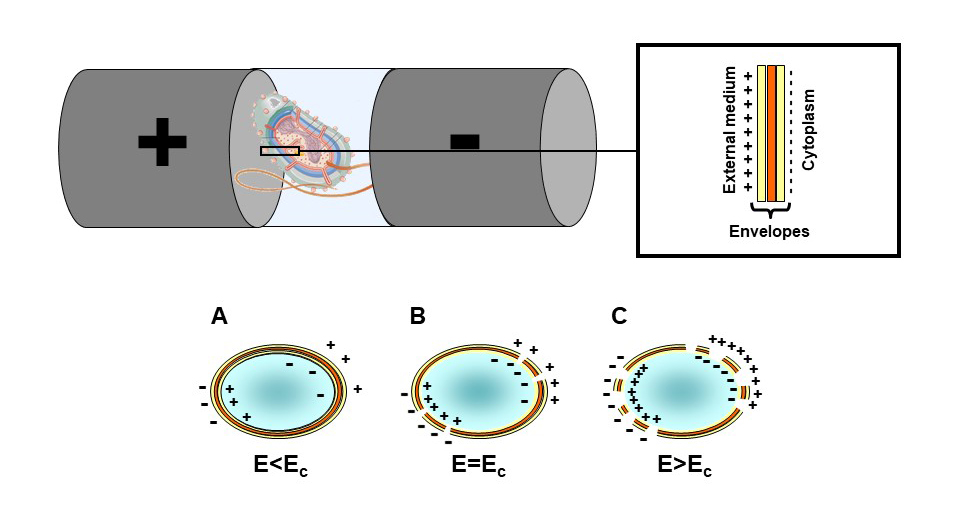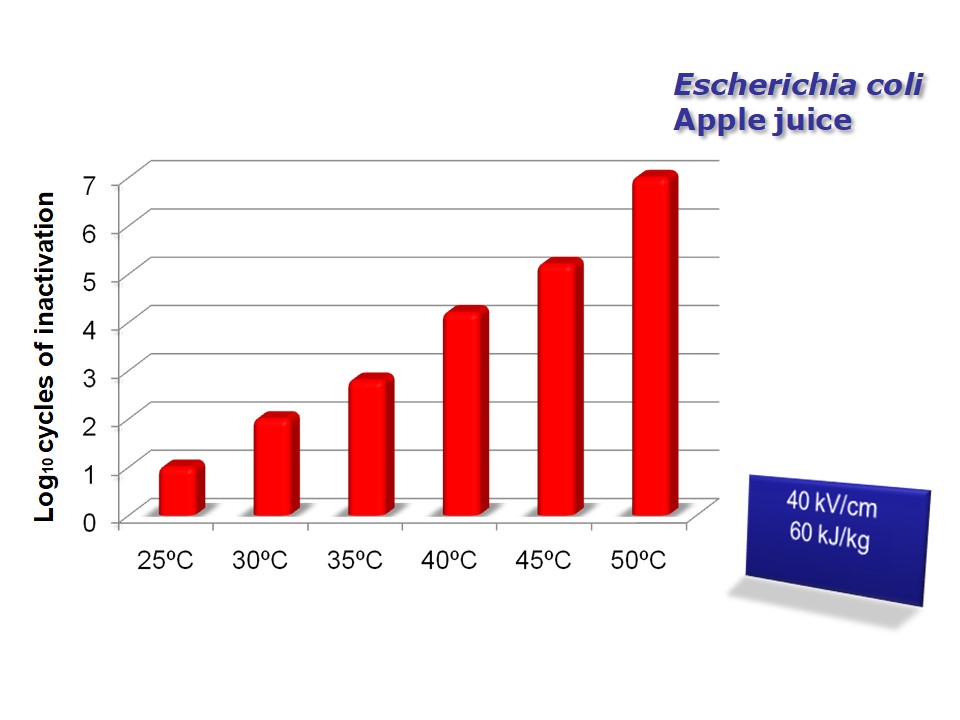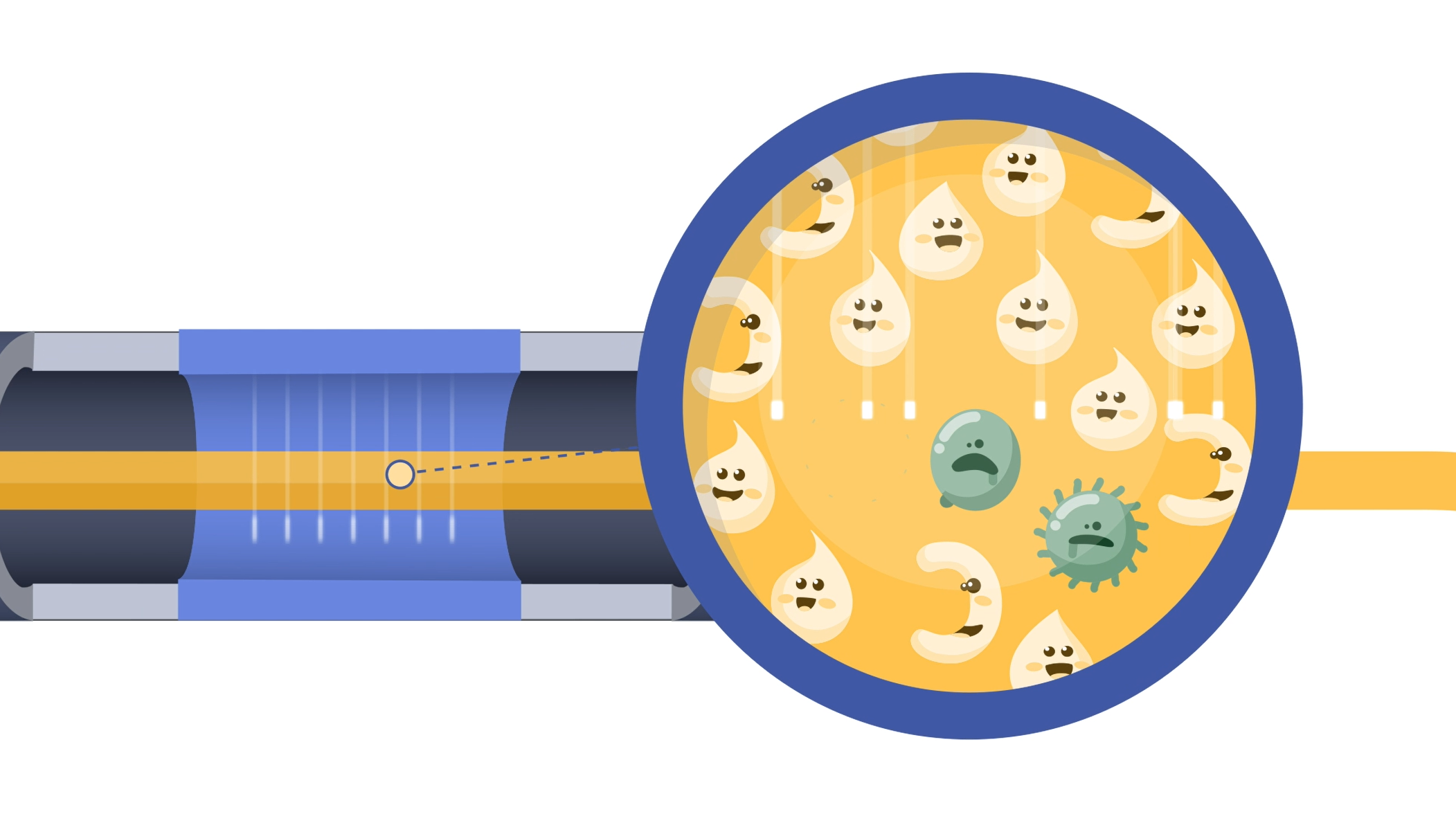The efficacy of PEF to inactivate vegetative cells has been widely demonstrated, and it can, therefore, be used as a method for the pasteurisation or shelf-life extension of liquid food products.
Microbial inactivation by means of pulsed electric fields (PEF) has probably been the most studied application of this technology for the food industry, since it is well-known that this technology can inactivate vegetative bacteria, yeasts and moulds while preserving the quality of food products.
Watch video: How PEF works in food industry
In this article, we will briefly review the current knowledge on microbial inactivation by PEF, particularly focusing on non-thermal inactivation. Its combination with other agents – including mild heat – will also be discussed. Its use as a method for the volumetric heating of food products will be analysed in another article.
Mechanism of microbial inactivation by PEF
Permeabilisation of the cellular envelopes is believed to be the principal mechanism of microbial inactivation by PEF. However, the molecular mechanisms leading to the formation of pores is not completely understood. The most widely accepted theory suggests that, when an external electric field is applied, as in PEF treatment, a high amount of free charges of opposite charge accumulate on both membrane surfaces, resulting in the compression of the membrane. When the external electric field exceeds a critical value or threshold (approximately 1 v), the membrane is unable to withstand compression forces, and pores are formed.

The formation of the pores might be reversible (can be resealed) or irreversible (cannot be resealed). This has very obvious implications. Thus, from the point of view of food safety and stability, irreversible electroporation would, at least in principle, be more interesting. However, the occurrence of reversible electroporation opens the possibility for the development of combined processes, which is a very interesting field/opportunity, as will be discussed below.
Factors determining microbial inactivation by PEF
Microbial inactivation by PEF is affected by several factors that can be grouped as:
- processing parameters
- microbial characteristics and
- treatment-medium characteristics.
Processing parameters
Processing parameters basically include: electric field strength, treatment time, pulse shape, pulse width, frequency and specific energy.
It is important to note that, in order to achieve microbial inactivation, a “critical electric field strength” (Ec) should be reached. However, this value also depends on other parameters such as treatment time and pulse width (i.e. the higher the treatment time, the lower the Ec). In any case, given the small size of microorganisms, these Ec values are always higher than 1 kV/cm, and typically in the range of 10–20 kV/cm – much higher than for other PEF applications.
Another relevant process parameter is temperature; although PEF technology emerged as a non-thermal technique for food preservation, the lethal effect of PEF has been shown to notably increase with temperature, even when combined with non-lethal temperatures (< 50 ºC) as will be discussed below.

Microbial characteristics
Regarding microbial characteristics, there are various aspects that are relevant but, undoubtedly, the one that is most relevant is the type of microorganism. It is known that, although PEF technology is rather successful in achieving the inactivation of vegetative cells of bacteria, moulds and yeast, bacterial spores are resistant to this technology. However, recent studies have reported that bacterial spores can be inactivated by the combination of moderate pre-heating and PEF treatments with elevated final temperatures.
Treatment-medium characteristics
Finally, treatment-medium characteristics also significantly affect microbial inactivation by PEF. Among these, electrical conductivity (given the nature of PEF) is very relevant, although it seems that this is more important from the point of view of implementation and equipment design than it is from the point of view of microbial resistance itself.
t has also been demonstrated that decreasing water activity results in increased microbial resistances, and that the effect of the pH of the treatment-medium depends on the microorganism studied, with Gram positives and Gram negatives displaying their maximum PEF resistance at different pHs.
Combined treatments
Even though the efficacy of PEF to inactivate vegetative cells has been widely demonstrated, it is necessary in most cases to apply very intense PEF treatments (high voltages and long times) in order to obtain substantial microbial inactivation that ensures food safety and stability.
From a practical point of view, these high-intensity treatments have many drawbacks related to the equipment requirements, the impact on the food properties and the total costs of the process. Its industrial scaling-up is therefore quite limited for microbial inactivation purposes.
On the other hand, bacterial spores and enzymes are resistant to PEF. This could be an additional limitation of the technology. Therefore, in order to increase the lethal effect of PEF treatments, or to prevent the deteriorative agents after PEF, some combinations of PEF with other preservation strategies have been investigated.
The three most relevant ones are probably:
- Its combination with mild heat temperatures (< 50 ºC) that should not affect food properties.
- Its combination with acidification (or application to acidic food products), since this will later inhibit the germination of surviving spores.
- Its combination with antimicrobial compounds, such as nisin, lysozyme, EDTA, organic acids and essential oils, among others.
Concluding remarks
As can be deduced from all that has been indicated above, the potential applications of PEF in relation to microbial inactivation would be for shelf-life extension and for the pasteurisation of liquid food products.
For this application, the major advantages of PEF-based processes, as compared to other traditional and novel food preservation technologies, would be:
- Especially useful for thermo-sensitive food products
- Low impact on sensorial and nutritional food properties
- Can be applied in continuous flow
- Large-scale systems available (TRL 8-9)
And the major limitations would be:
- Only for liquid products
- Unable to inactivate spores
- Limited effect of enzymes
| Title | Author(s) | Year | |
|---|---|---|---|
| Microbial inactivation by non-thermal technologies for food preservation | Guillermo Cebrián and Santiago Condón | 2017 | Go to publication |
| Preservation of liquid foods by high intensity pulsed electric fields—basic concepts for process design. | Heinz, V., Alvarez, I., Angersbach, A., & Knorr, D. | 2001 | Go to publication |
| Comparative Resistance of Bacterial Foodborne Pathogens to Non-thermal Technologies for Food Preservation | Cebrián, G., Mañas, P. and Condón, S. | 2016 | Go to publication |
| Microbiological aspects related to the feasibility of PEF technology for food pasteurization | Saldaña, G.; Álvarez, I.; Condón, S.; Raso, J. | 2014 | Go to publication |


